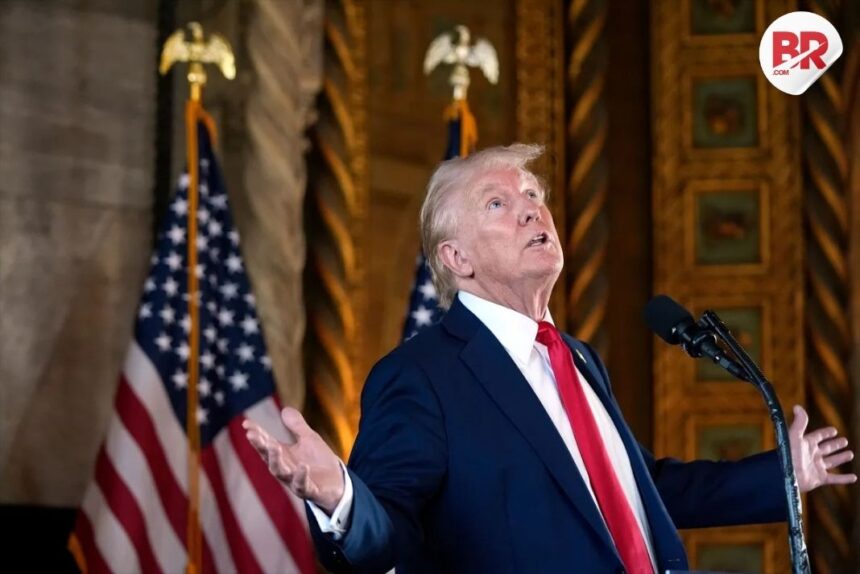
In the wild world of the internet, it’s easy for things to get out of hand. Case in point: a viral AI-generated image showing Donald Trump dressed in the traditional robes of the Pope.
The absurdity of the image alone would have been enough to raise eyebrows, but it was the false reports circulating about the Pope’s supposed death that pushed this controversy into overdrive.

The combination of a digitally fabricated image and a rumor-based crisis has sparked outrage and ignited a conversation about the ethics of AI in a time when reality and fiction are dangerously close.
The Image: A Stark Blend of Humor and Insensitivity
The image in question, created using AI, depicted Trump in ornate Papal attire—complete with the zucchetto (the small white hat) and other sacred symbols of the papacy.
While some saw it as an amusing meme, the timing couldn’t have been worse. Just as the image spread like wildfire on social media, rumors about the Pope’s health reached a boiling point, with some claiming he had passed away.
This unfortunate timing transformed what might have been seen as a harmless joke into a deeply insensitive image, one that struck a nerve with many.
From Donald Trump Truth Social 05/02/25 10:29 PM pic.twitter.com/6BmCkSY1Q8
— Donald J. Trump Posts From His Truth Social (@TrumpDailyPosts) May 3, 2025
Why Did People React So Strongly?
The backlash was swift and intense, with users across social media platforms condemning the image. But why? A few key factors explain the uproar:
-
Insensitivity: The AI-created image was seen by many as mocking a deeply revered religious figure, especially at a time when the Pope’s health was a genuine concern. The idea of Trump, a highly controversial political figure, being dressed as the Pope felt jarring and disrespectful to people’s beliefs.
-
Misinformation Amplification: The false reports surrounding the Pope’s death exacerbated the situation. What could have been dismissed as a silly digital creation was now viewed through the lens of a much darker context—one where AI was being used to manipulate emotions and spread harmful misinformation.
-
AI Ethics: This incident highlights an important issue: the ethical use of AI in creating content. AI tools, when in the wrong hands, have the power to manipulate images and videos in ways that can blur the line between truth and falsehood. In cases involving politics and religion, these creations can be explosive.
The Ethics of AI-Generated Content: Where Do We Draw the Line?
As AI technology advances, the line between what is real and what is fabricated becomes increasingly blurry.
This incident serves as a reminder of the dangers of AI-generated content, especially when it involves sensitive topics like political figures or religious leaders. With the rise of deepfakes and other AI tools, society must ask itself: What’s the limit?
How can we prevent AI from becoming a tool for misinformation and manipulation? The need for ethical guidelines and regulations has never been more urgent.
Also Read Trump Calls Portrait in Colorado ‘Distorted’ Despite Supporter’s Intent
What Does This Mean for You?
For the average person scrolling through their social media feed, this situation is a reminder that not everything we see online is real.
AI has made it easier than ever to create compelling images and videos, but it’s equally important to develop the skills to critically evaluate the content we consume. If we fail to question the authenticity of what we see, we risk being misled by false narratives and manipulative content.
In an age where a meme can spark a media frenzy and AI can create fake news at the push of a button, it’s vital for us to stay informed. Understanding the potential harms of AI-generated content is not just a luxury—it’s a necessity.
Can This Be a Turning Point?
While the Trump Papal image may have been controversial, it did ignite a crucial discussion on the responsible use of AI.
This debate forces us to reckon with the ethical implications of such technologies and underscores the need for media literacy in the digital age. Perhaps, in the long run, this controversy will lead to better safeguards against AI misuse and a more discerning approach to online content.
A Wake-Up Call for the Digital Age
The AI-generated Papal image scandal is not just about one offensive picture; it’s about the larger implications of digital manipulation in an era of rampant misinformation.
As AI continues to evolve, the responsibility falls on all of us to demand accountability, to think critically, and to ensure that the tools designed to enhance our lives don’t end up causing harm.
Also read Is Trump’s U.S. Tariff Plan Backfiring? Why Asian Markets Are Suddenly Surging












